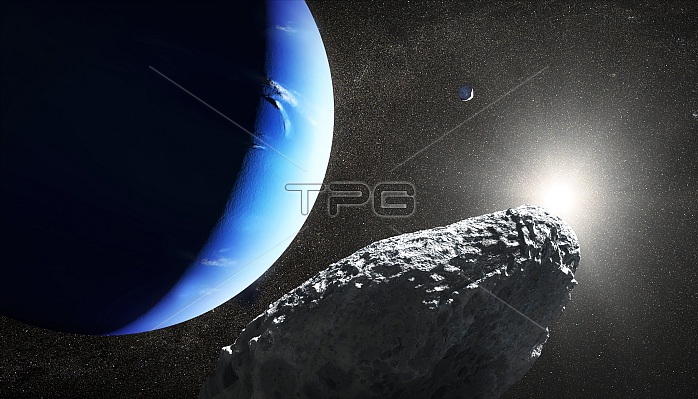
Neptune's moon Hippocamp, illustration. This tiny moon (lower right) was discovered in 2013 by analysing Hubble Space Telescope images taken several years earlier. Only 32 kilometres across, it is thought to be a broken-off fragment from the much larger neighbouring moon, Proteus, seen as a crescent in the background. Neptune is at left. This is the first evidence for a moon being formed from a larger body following an impact. The impact took place billions of years ago, and Proteus has migrated outwards in its orbit since then, leaving Hippocamp behind. The two moons are around 12,000 kilometres apart. Hippocamp's name when discovered was S/2004 N 1.
| px | px | dpi | = | cm | x | cm | = | MB |
Details
Creative#:
TOP24702751
Source:
達志影像
Authorization Type:
RM
Release Information:
須由TPG 完整授權
Model Release:
N/A
Property Release:
N/A
Right to Privacy:
No
Same folder images:

 Loading
Loading